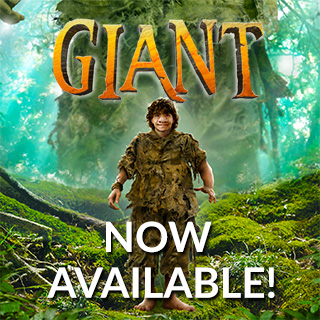Daddy, Is it True? – Children’s Book Review

“Daddy, is it true?”
That is the all-time favorite question of my children, ages seven, six and four. (Our newborn son has not yet taken up the refrain, though he will soon enough.)
Is it true? I hear that question, predictably, whenever I crack open a book we are about to read together. It doesn’t matter whether we are sitting in an armchair or cuddling with pillows, whether it is morning or evening, whether the words are written in English or Spanish. That question has been so often repeated that I even hear it when I am all alone, sitting in the attic of our pandemonious home, trying to write books of my own.
Is it true? This is not merely a question about factual content—although facts have something to do with it. I have come to believe that this question is nothing less than the ultimate challenge facing anyone bold enough to try a story.
Truth in literature does not depend on whether a story is called fiction or non-fiction, nor does it depend on the genre, for the question of truth applies equally to poetry or biography, to nature books and mystery novels, to essays on science and musings on faith, to historical fiction and allegorical fantasy. Nor does it depend on the number of pages or sources or footnotes. It depends on numerous factors, sometimes evidence by footnotes, but normally not, all of which contribute to a fundamental sense of honesty. Of believability. Of truth.
This quality of truth is as elusive as it is essential. There is no easy, sure-fire formula for creating stories that feel true. However, in struggling to write my own stories, I have learned a couple of things.
First, truth is usually found in simplicity, not complexity. In basic, unadorned experiences. The feel of a face you love. The crunch of a spruce bough underfoot. The smell of leather. The peculiar glow in the wings of a living butterfly that vanishes after it dies. The laughter of a child.
The three books in my Heartlight sequence—Heartlight, The Ancient One, and The Merlin Effect—have been described as fantasy, science fiction or mythic quests. They have also been described as believable and true. That pleases me, especially since no stories have more need of being grounded in truth, in experience, than those stories attempting to take us beyond our actual experience. A voyage into the unknown does not occur unless the author has first won the trust of the reader. And such trust is earned by the convincing truth of the details. Second, every element of a story, no matter how trivial, must pass the lie detector test. Readers will spot even the slightest fakery in a flash.
A story is a kind of tapestry. The truth of the whole depends on the truth of every single thread. These threads carry names like character, place, plot and idea. If they speak truthfully to human experience, if they bring to life some of our most basic yearnings and hopes and fears—then the story woven of them has a chance to touch people, a chance to last. But if just one of them is worn out or artificially colored, the entire tapestry could fail.
For me, then a good story is a true story. True in the fundamental sense that I believe in it completely. I must, however, believe in each thread before I can believe in the tapestry. To illuminate these ideas, I would like to describe some of my own experiences in finding the truth within a story.
Character
Heartlight is the tale of a remarkable friendship between Kate, a twelve-year-old girl, and her grandfather, a famous astrophysicist who is trying to find the link between the nature of light and the nature of the soul. He makes a surprising discovery, and finds himself in deep trouble. His only hope lies in the basic emotional wisdom of his granddaughter.
For this story to succeed, the reader must believe in their friendship. Right down to the details of their opening picnic in the garden, surrounded by colorful chrysanthemums. Yet even more challenging for me, as a man, was the problem of making the main character, a girl, come alive. To do this I not only interviewed my good wife extensively, but I also stepped back from writing the book and composed a short biography of Kate. Finally, nine drafts later, her role in the story felt true.
Place
The greatest challenge I faced in writing The Merlin Effect was to join several varied themes into a single, seamless whole. These themes include a new twist on the legend of Merlin, young Kate’s relationship with her father, the sunken Spanish galleon (loaded with treasure, of course), a mysterious prophecy that the ship might someday rise and sail again, a bit of modern genetic theory, and a magical drinking horn.
Yet the most challenging them of all proved to be something else. The sea. Having lived most of my life in Colorado, the mountains and alpine meadows of the Rockies are in my blood. But the sea, with all its sounds and smells, rhythms and mysteries, is not. And without a truly believable setting, my novel would not succeed.
Although I had read extensively about the sea, no amount of texts on marine biology and ecology, no amount of elegant prose and poetry, could solve this problem for me. The solution was to pack up my snorkel and go to the coast of Baja California, where the story takes place. Only after ten days of camping on the shore and kayaking in the open ocean could I begin to write convincingly about the screech of the gulls and the scent of kelp. Only after listening to the surf and watching the waves for days could I bring to life the mysterious whirlpool that the local people call the place where the sea begins, the womb where the waters are born… And only after touching the barnacled back of a gray whale and looking straight into his wide open eye could I describe the whales who surround the whirlpool, ever circling, ever singing.
Plot
The Ancient One finds Kate and a boy named Jody trapped back in time, in a strange place called Lost Crater. In order to unravel the mystery and prevent the great disaster, they must learn to communicate with each other (no easy task) and also with a lost Native American tribe known as the Halamis. All this must happen before a great redwood tree, the only living connection to their own times, is cut down—severing the two times forever.
For this plot to be convincing, the Halamis, though fictional, must be completely believable. As a result, I spent several months researching some of the Native American tribes of the Pacific Northwest, including the Tolowa, Takelma, Coos, Yurok, Wiyot, Hupa, Karok, Coquille and Tututni peoples. Of course, in such a brief time I came to know these peoples only a little. Nevertheless, that research proved essential to my own understanding, and to the book itself.
Idea
Underlying each of my stories is a question, something I would like to explore in the context of an absorbing tale. In Heartlight, I am wondering: What difference does one life make? Or, put another way, does every individual matter somehow? In The Ancient One, the question is: Are we all connected somehow? Are all living things part of a web that stretches across time, across culture, perhaps even across species? In The Merlin Effect, I raise the question: What really is the power of creation? And can each of us share in that power, by the choices we make, the lives we lead?
The chance to wrestle with such issues is a large part of the joy and labor of writing. These questions often keep me working late into the night. Judging from the letters I receive, they also keep people reading late into the night. In the end, for both reader and writer, the answers may be no clearer, but the questions remain as compelling—and true—as ever.
Sometimes I imagine my favorite bookshelf as a country lane. On that dirt track with gross growing up the middle live Merlin, Arthur and Morgaine, just a few paces away from Bilbo Baggins, Mole and the Count of Monte Cristo. Nearby a girl named Anne Frank writes solemnly in near-darkness, a boy named Caspian listens eagerly to tales of Old Narnia, a man named Zhivago struggles with the tides of love and war, and a spider named Charlotte spins an impeccable web.
The lane is fabulously diverse. It is lined with doorways labeled Tree and Leaf, The Yearling, Time of Wonder, My Antonia, A Wrinkle in Time, Taran Wanderer and A Field Guide to Snow Crystals. Albert Einstein’s letters, Dorothy Wordsworth’s journals, and John Muir’s Travel notes can be found there. Miss Rumphius, Anansi and Charles Dickens have been known to stopy by, as have Usula LeGuin, Prometheus and Kokopelli, flute in hand.
What binds them all together is that each of the books on that shelf touched me somehow. Each of them says something I’d like to savor for my whole life. Each of them is true.

